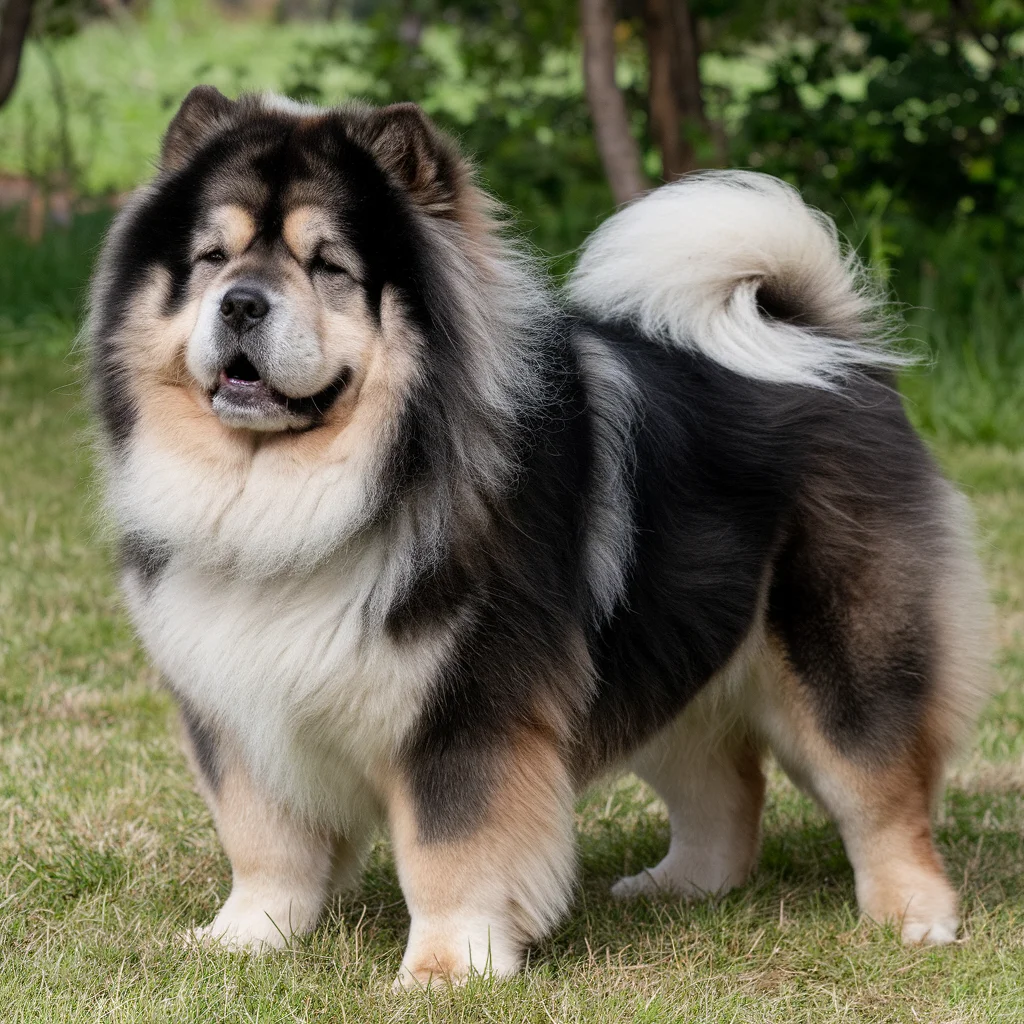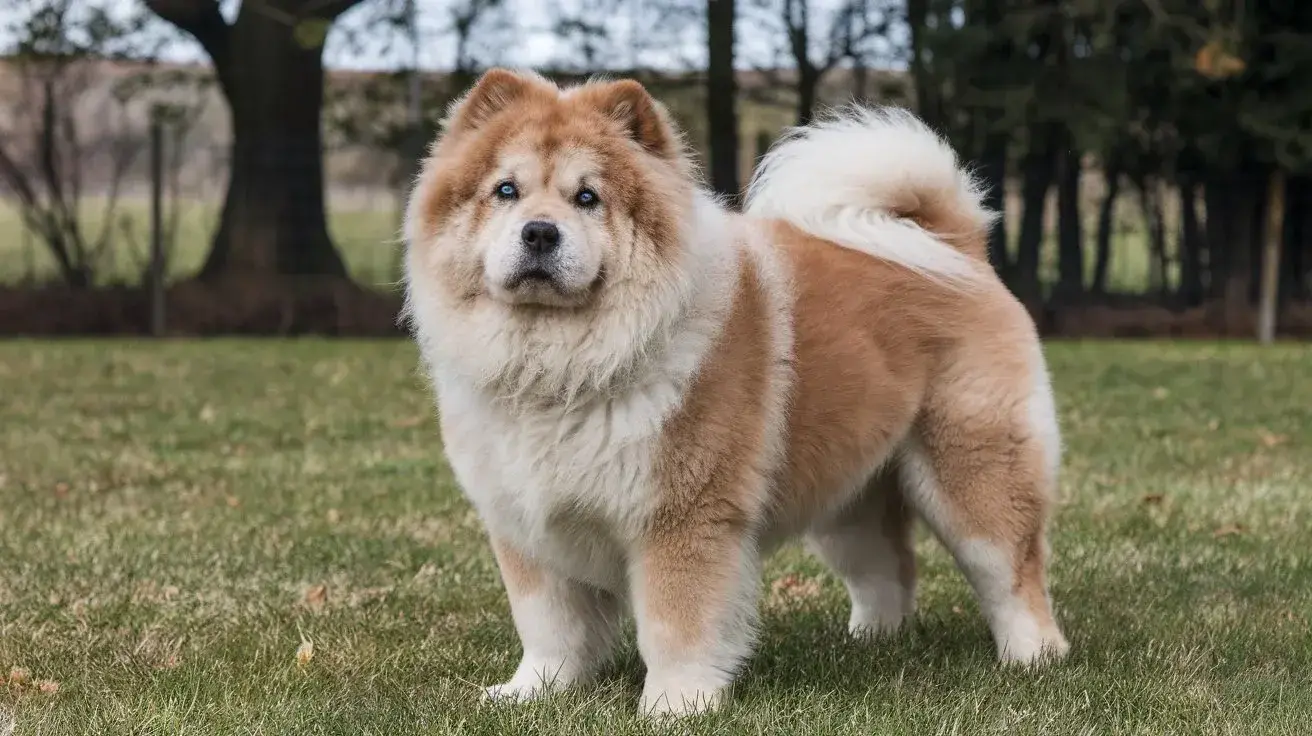Chow Chows are one of the most ancient and distinctive dog breeds, known for their regal appearance and lion-like mane. Beyond their unique personalities and loyal nature, Chow Chows stand out for their stunning variety of coat colors.
Whether you’re a dog enthusiast, a breeder, or simply someone interested in this majestic breed, understanding the Chow Chow’s coat colors is an essential part of appreciating their beauty.
In this guide, we’ll dive deep into the 7 Chow Chow colors you must learn to recognize. We’ll explore the genetics behind these colors, the variations within each, and how coat type and color affect their overall health and maintenance.
General Appearance and Physical Traits of Chow Chows

The Chow Chow is often described as sturdy, dignified, and aloof. These dogs have a distinct appearance, with a muscular, square build and a heavy coat that gives them a lion-like mane. Some key physical traits include:
- Deep-set eyes that lend them a scowling expression.
- A blue-black tongue, a characteristic shared by few breeds.
- Curled tail that rests over the back.
- Thick double coat that comes in both smooth and rough varieties.
In terms of temperament, they tend to be independent and can appear reserved, but they are fiercely loyal to their families.
Chow Chow Coat Colors
Understanding Chow Chow colors starts with recognizing that they come in several shades, all of which are breed-standard. These colors are determined by genetics, and each one has its own nuances. Here, we’ll break down the most common colors and their unique characteristics.
Red
One of the most recognizable colors of the Chow Chow breed is red. However, this isn’t a single shade. The color ranges from deep mahogany to a lighter, almost golden tone. Red Chow Chows are often the most iconic, associated with the breed’s majestic appearance.
- Shades of Red: The depth of the red color can vary based on genetics and even age. Some red Chow Chows are born with a darker coat that lightens as they mature.
- Health Considerations: Red Chow Chows, like all colors, need regular grooming to maintain the vibrancy of their coats. No color-specific health concerns are associated with red coats, but proper diet and care will ensure they stay healthy and vibrant.
Cream
Cream Chow Chows are particularly striking, often mistaken for white due to their light coat. The cream color is generally pale but may carry hints of light beige or pale gold.
- Distinguishing Characteristics: Cream Chow Chows typically have lighter noses and eye rims. Their coat can appear to have a golden shimmer in sunlight.
- Health Considerations: Like many light-colored dogs, cream Chow Chows may be prone to sun sensitivity, so protection during hot days is necessary. Grooming is essential to keep their coat clean and free of stains.
Black
A black Chow Chow has a stunning, solid-colored coat that can sometimes appear almost blue-black in certain lighting. Black is one of the classic colors of this breed.
- Fading in the Sun: One characteristic of black Chow Chows is that their coat can fade slightly with prolonged sun exposure, leading to a more brownish tinge.
- Coat Maintenance: Keeping a black Chow Chow’s coat shiny requires regular grooming. Proper nutrition with supplements like omega-3 fatty acids can also help maintain the coat’s luster.
Blue

The blue Chow Chow is truly unique, thanks to the dilute gene responsible for the coat color. This genetic trait gives the coat a greyish-blue or slate-colored appearance.
- Genetics of Blue: The blue color comes from a recessive gene that dilutes the black pigment, resulting in the blue-grey color.
- Coat Care: Blue Chow Chows require particular attention to prevent their coat from fading or developing patches. Special shampoos and conditioners designed for dark coats can help maintain their color.
Fawn / Cinnamon
The fawn or cinnamon Chow Chow is another rare color. It can range from a light beige to a rich cinnamon brown.
- Color Variations: Often mistaken for red, cinnamon has more of a brownish tint. The color is less common but highly desirable for those looking for something unique.
- Historical Significance: Fawn and cinnamon Chow Chows have historical roots, with some stories suggesting these colors were favored by royalty in ancient China.
White
White Chow Chows are often confused with cream-colored ones, but true white Chows are rare. Their coats are a bright white with no hints of gold or cream.
- Care for White Coats: White Chow Chows require careful grooming to avoid coat staining, especially around the eyes and mouth. Tear staining is a common issue that can be managed with proper grooming and diet adjustments.
- Health Considerations: As with cream Chows, white Chow Chows may need extra sun protection, as lighter coats can be more sensitive to the sun.
Dark Brown
Dark brown Chow Chows are less common but still recognized as part of the breed standard. This color ranges from a chocolate brown to almost black in appearance.
- Appearance and Grooming: Dark brown coats often appear richer in sunlight. They need regular brushing to maintain the coat’s deep, glossy appearance.
- Rarity: Although not as rare as blue or white, dark brown Chow Chows are still less common than red or black varieties.
Types of Chow Chow Coats and Their Impact on Color

Chow Chows have two distinct coat types: rough and smooth. Each coat type has its own grooming requirements and can impact how the color appears.
- Rough Coats: This is the more common coat type, with a dense, coarse outer layer and a soft undercoat. Rough-coated Chow Chows often require more grooming, as their coat can mat easily.
- Smooth Coats: Smooth-coated Chow Chows have shorter, sleeker fur. The color often appears more vibrant on smooth coats because the hair reflects light differently.
- Coat Color Maintenance: Regular brushing is essential for both coat types to prevent matting and keep the coat vibrant. Chow Chows shed seasonally, so extra care during shedding periods is necessary to maintain the quality of their coat.
| Coat Type | Grooming Needs | Color Maintenance |
| Rough | High – regular brushing, detangling, and bathing required | Colors can appear dull if not groomed regularly |
| Smooth | Moderate – regular brushing and occasional baths | Colors often look richer due to the shorter fur |
The Mythical Blue-Black Tongue of the Chow Chow
One of the most distinctive features of the Chow Chow is their blue-black tongue. While most dogs have pink tongues, Chow Chows, along with a few other breeds, are known for their unique tongue color.
- Genetics Behind the Tongue: The blue-black tongue is due to a higher concentration of pigment cells. All Chow Chows are born with pink tongues that darken as they mature.
- Variations in Color: While most Chow Chows have a completely blue-black tongue, some may have spots or patches of pink, which are still within the breed standard.
Legends and Stories Behind the Chow Chow’s Tongue
The blue-black tongue has led to many myths and legends. One popular Chinese legend states that the Chow Chow’s tongue was colored blue after licking the sky when it was created.
Another tale suggests that the blue-black tongue is a symbol of the breed’s ancient, mystical origins, tying it to royalty and divinity.
The History of the Chow Chow and Its Coat Colors
Chow Chows have a long and storied history dating back to ancient China. They were used as hunting dogs, guard dogs, and even as war dogs in imperial China. Their distinctive coat colors were often seen as a mark of prestige.
- Red and Cream Chows: Historically, red and cream Chow Chows were most associated with royalty. These colors were often depicted in ancient Chinese art.
- Cultural Significance: Blue and cinnamon Chows were prized for their unique appearance and were often kept by wealthy merchants and aristocrats.
Does Coat Color Affect the Health of Chow Chows?
Chow Chow coat colors are generally not linked to specific health issues, but some considerations include:
- Lighter Coats and Skin Sensitivity: Cream and white Chow Chows may be more sensitive to the sun, leading to sunburn or skin irritation.
- No Color-Specific Genetic Issues: Unlike some other breeds, Chow Chows do not have color-linked genetic problems. However, all Chow Chows are prone to hip dysplasia, entropion (eyelid issues), and allergies, which are not related to coat color.
Conclusion
The Chow Chow’s unique coat colors only add to the breed’s mystique and beauty. Whether you prefer the iconic red or the rare blue, each color offers a unique take on the breed’s regal appearance.
However, remember that beyond color, responsible breeding and care are what truly ensure the health and well-being of these magnificent dogs.
What color stands out to you the most? Share your thoughts and experiences with this beautiful breed!












